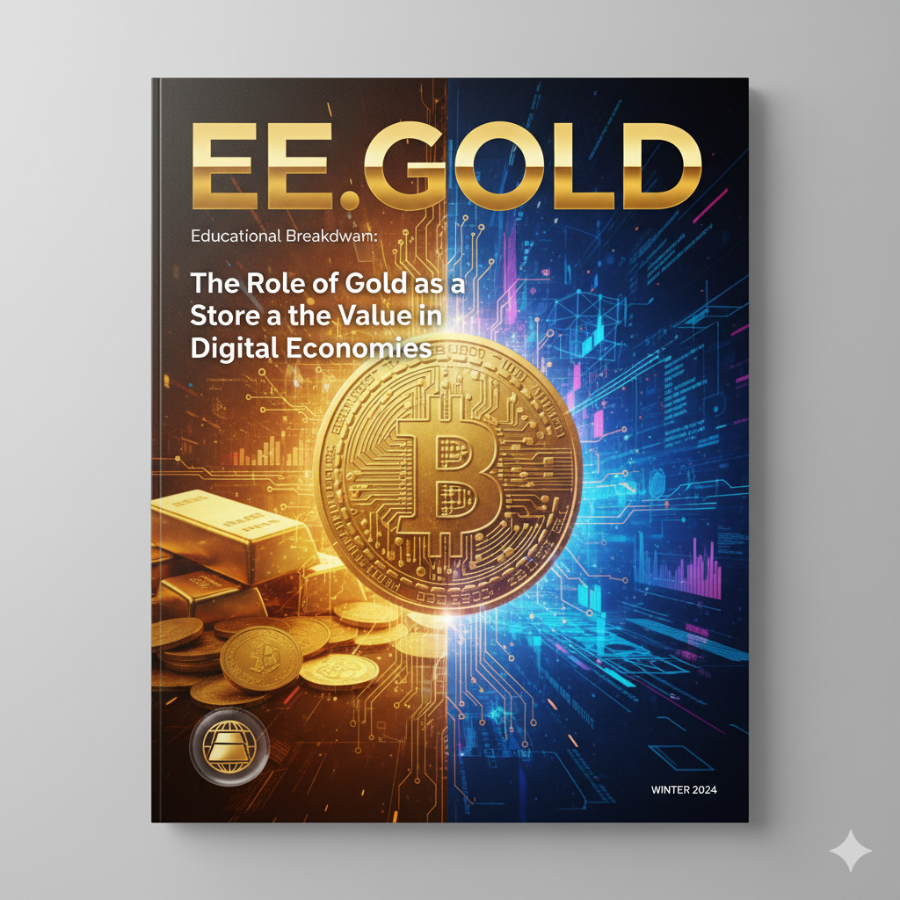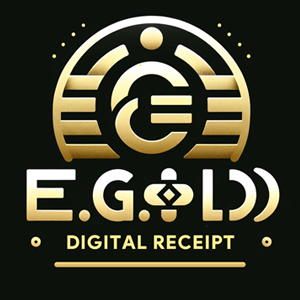
In an era dominated by cryptocurrencies, blockchain technologies, and digital payments, gold might seem like a relic from a bygone age. Yet, this precious metal continues to play a pivotal role as a store of value, even—or especially—in digital economies. As virtual assets fluctuate wildly and fiat currencies face inflationary pressures, gold offers a tangible anchor of stability. This educational breakdown explores gold's enduring qualities, its interplay with digital finance, and why it remains a cornerstone for wealth preservation in a world increasingly powered by code.
What Makes Gold a True Store of Value?
A store of value is any asset that maintains or increases its purchasing power over time, resisting depreciation from inflation, economic shocks, or political instability. Gold excels here due to several intrinsic properties:
- Scarcity and Durability: Gold cannot be printed or digitally created at will. Its supply grows slowly through mining, typically at 1-2% annually, far below the money supply expansion of most fiat currencies. Unlike paper money or even some digital tokens, gold doesn't corrode, degrade, or vanish in a server crash.
- Universal Acceptance: For over 5,000 years, gold has been recognized globally as wealth. From ancient civilizations to modern central banks, it's a medium of exchange and value storage that transcends borders and regimes.
- No Counterparty Risk: Holding physical gold means you own it outright—no reliance on banks, governments, or smart contracts that could fail or be hacked.
In digital economies, where assets like Bitcoin are hailed as "digital gold," the real metal provides a benchmark. Cryptocurrencies aim to mimic gold's scarcity (e.g., Bitcoin's 21 million cap), but they lack gold's physical tangibility and historical proof against total loss.
Gold vs. Digital Assets: A Comparative Analysis
Digital economies thrive on speed, accessibility, and innovation. Cryptocurrencies enable borderless transactions, DeFi platforms offer high yields, and NFTs create unique digital ownership. However, these come with volatility and risks that gold mitigates:
| Aspect | Gold (Physical/Tangible) | Digital Assets (e.g., Crypto) |
|---|---|---|
| Volatility | Low; steady long-term appreciation | High; prone to 50-80% drawdowns |
| Liquidity | High via global markets and dealers | Instant on exchanges, but exchange risks |
| Storage | Vaults or personal safes; no ongoing fees | Wallets; vulnerable to hacks or lost keys |
| Inflation Hedge | Proven over centuries | Emerging; some like BTC show promise |
| Regulatory Risk | Minimal; owned outright | High; subject to bans or taxes |
This table highlights why many in digital spaces view gold as a complement, not a competitor. During crypto winters, gold's price often rises as investors seek safety.
Historical Context: Gold's Resilience Through Economic Shifts
Gold's role as a store of value predates digital economies by millennia. It backed currencies under the gold standard until the 20th century, providing stability during wars and depressions. In the 1970s, when the U.S. abandoned gold convertibility, its price soared amid inflation, preserving wealth for holders.
Fast-forward to the 21st century: The 2008 financial crisis saw gold surge while stocks plummeted. The COVID-19 pandemic repeated this pattern, with gold hitting record highs as stimulus flooded markets. In digital economies today, similar dynamics play out—crypto booms fuel wealth creation, but corrections remind holders of gold's ballast.
Gold in Modern Digital Economies: Integration and Innovation
Far from being obsolete, gold is adapting to digital realms:
- Tokenized Gold: Platforms allow buying fractions of physical gold backed by real bars in vaults, traded on blockchains. This merges gold's stability with crypto's efficiency.
- Central Bank Holdings: Nations stockpile gold reserves, using digital ledgers for tracking while maintaining physical custody.
- Portfolio Allocation: Financial advisors recommend 5-15% in gold for diversified digital portfolios, balancing high-risk crypto with low-risk bullion.
In emerging digital economies like those in Asia and Africa, where mobile money dominates, gold serves as a bridge—convertible via apps into digital wallets during stable times and redeemable physically during crises.
Challenges and Criticisms of Gold as a Store of Value
No asset is perfect. Gold yields no interest or dividends, and storage costs can add up. Its price can stagnate for years, underperforming growth assets like stocks or crypto during bull markets. Critics argue digital alternatives like stablecoins or yield-bearing tokens offer better returns.
Yet, these criticisms overlook gold's primary function: preservation, not speculation. In hyperinflation scenarios (e.g., Venezuela or Zimbabwe), gold has outperformed digital assets cut off by power outages or internet blackouts.
Practical Steps to Incorporate Gold into Your Digital Wealth Strategy
- Assess Your Portfolio: Calculate crypto exposure and allocate 10% to gold for balance.
- Choose Forms Wisely: Opt for coins (e.g., Eagles, Krugerrands) for liquidity or bars for bulk storage.
- Secure Storage: Use allocated vaults or home safes; avoid unallocated schemes with counterparty risk.
- Monitor Markets: Track gold prices via apps, buying during dips triggered by crypto rallies.
- Tax Implications: Understand reporting for physical assets vs. digital trades.
The Future: Gold's Enduring Place in a Fully Digital World
As metaverses, AI-driven finance, and central bank digital currencies (CBDCs) emerge, gold's role may evolve but won't diminish. It could underpin stablecoins or serve as collateral in DeFi protocols. In a world of endless digital creation, gold's finite nature ensures its scarcity premium.
Ultimately, gold teaches a key lesson for digital economies: True value endures beyond screens and servers. By blending the innovation of blockchain with the immortality of aurum (Latin for gold), investors build resilient wealth that withstands the test of time—and code. Whether you're a crypto enthusiast or a traditional saver, understanding gold's store-of-value mechanics empowers smarter decisions in an increasingly digital financial landscape.
NOTE
This Content is the copyrighted content of EE.GOLD. All rights are reserved. You are welcome to share or use our content only by including direct links to our website. Any other form of reproduction, distribution, or use without proper attribution is strictly prohibited.
This Content is intended solely for educational purposes. The information provided does not constitute financial or investment advice.
Please note that Digital Storage Receipt, Secure Storage Solutions, and Physical Gold Sales are the only services offered by EE.GOLD.
We strictly adhere to government regulations and are firmly against all illegal financial or investment activities globally.
For further inquiries, feel free to contact us through our official channels.










.png)

